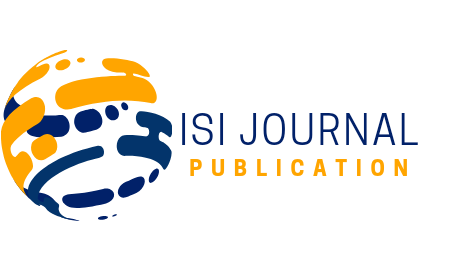Journal Impact Factor: Is It Really That Important?
For decades, the journal impact factor has been the most controversial topic in academia. Some of the scholars and researchers think that it is a vital standard for evaluating a journal, but a lot of them also criticize it as something which is old and outdated which can be misleading at times. If you’re navigating through the complex world of journal publication, you’ve probably questioned yourself “Does the impact factor really matter?”
Well the answer lies somewhere in between. While the impact factor plays a role in publication strategy, they are not the only measure which will help you succeed. In this blog lets dive into impact factor analysis, find out how journal ranking impacts career, and examine when to prioritize impact factors. We’ll also discuss how publication services help you to make intelligent choices for your research.
What is the Journal Impact Factor?
The journal impact factor (JIF) measures the maximum number of citations received by an article of a journal over a specific period of time (usually two years). It was originally designed by Eugene Garfield in the 1960s, it helped the libraries to decide which journals to subscribe to.
Today, however, in journal publication it has evolved into a benchmark for quality, reputation, and visibility.
For example:
- The higher the JIF of a journal, the more frequently its articles are cited.
- The lower the JIF of a journal, the smaller the readership or narrow scope.
But citation doesn’t really revolve around the quality, at times an article is cited because it’s controversial or has a flaw. This is where impact factor analysis becomes critical.
Understanding Impact Factor Analysis
Impact factor analysis is more than just looking at numbers. It includes looking at the context behind citations.
While doing impact factor analysis, consider:
- Field Difference: There are some fields which already have a higher citation rate such as medical research journals, they have a higher citation rate than humanities journals.
- Citation Patter: Even a few highly cited papers can inflate a journal’s score rather than consistent quality.
- Relevance: If a journal doesn’t reach the target audience then the publishing there might now have served your goal even if it has a high impact factor.
After examining these aspects, you can make more effective decisions rather than running high impact journals.
The Role of Journal Ranking
In academia, journal ranking frequently determines how your research is perceived. The departments, funding bodies, and hiring committees look at where you have published rather than what you have published.
By publishing in the top ranking you can:
- Enhance your academic reputation.
- Boost citation potential.
- Draw attention towards more collaboration opportunities.
However, relying only on the journal ranking can be difficult at times. Many well written journals that serve niche fields might not score high in ranking but still serve a great purpose.
Publication Strategy: Beyond the Numbers
Your publication strategy should not only revolve around impact factor. Instead, think strategically in a more creative way and see where your research fits well and what you hope to achieve.
Ask yourself:
- Do I want the maximum visibility in my field?
- Am I targeting an international or regional audience?
- Is this paper best suited for a specialized journal, even if its ranking is modest?
If you have a strong publication strategy then it can help you balance ambition with practicality. Journals with high impact are competitive and have a high rejection rate as well. Submitting only to such journals can disseminate your work’s potential. On the other hand, choosing a journal with a low ranking without considering visibility can undermine its reach.
Explore more options and work smartly while aiming for high ranking journals but also at the same time have back journals that still align with your goal.
Journal Publication: Choosing the Right Outlet
When it comes to journal publication the impact factor is just one of the many factors to be considered. There are other factors as well which have the same value as the impact factor:
- Scope and Relevance – Does the journal’s audience align with your research topic?
- Peer Review Standards – How firm is the journal’s peer review process?
- Accessibility – Is it subscription based or open access?
- Turnaround Time – How fast does the journal publish accepted work?
- Reputation – Apart from the number, does the academic community respect the journal?
By managing these factors the right way, it’ll ensure that your research reaches the right audience at the right time, whether or not the journal comes in the top tier ranking.
The Role of Publication Services
A lot of authors have a hard time while choosing the correct place to submit their research. This is where publication services can be helpful.
Professional publication services can help:
- Evaluate journals by impact factor analysis.
- Align your paper with journals that are the best fit for your research.
- Avoid predatory publishers that exploit researchers.
- According to the strict guidelines they’ll format and prepare submission.
- Optimize your publication strategy so your work gets maximum reach.
By going for expert support, you reduce stress, increase the chances of your paper’s acceptance, and ensure that your paper appears in journals which can have a great impact on your career.
The Future of Impact Factor and Journal Evaluation
The academic community is slowly moving towards new measures which will help the scholars/writers to improve the quality of their work while considering the impact. It fully provides a bigger picture which can help to navigate through tough decisions, make effective changes, and build a firm reputation in the long run.
